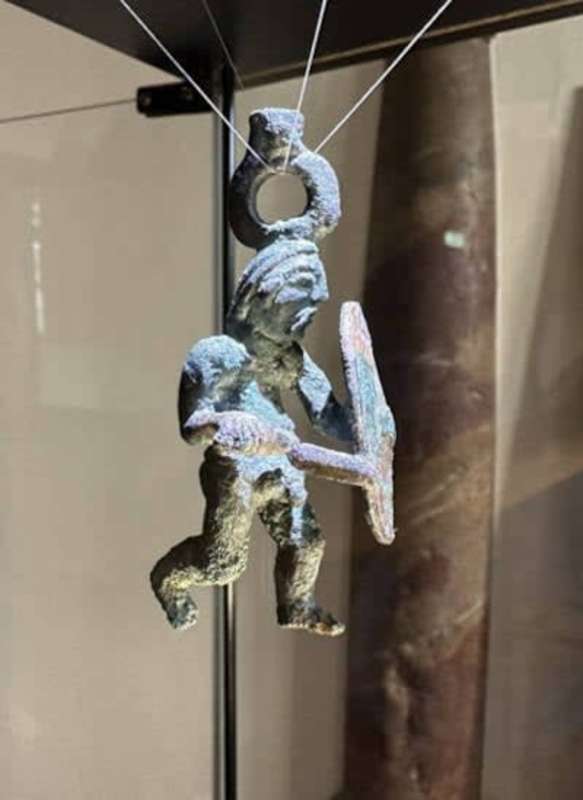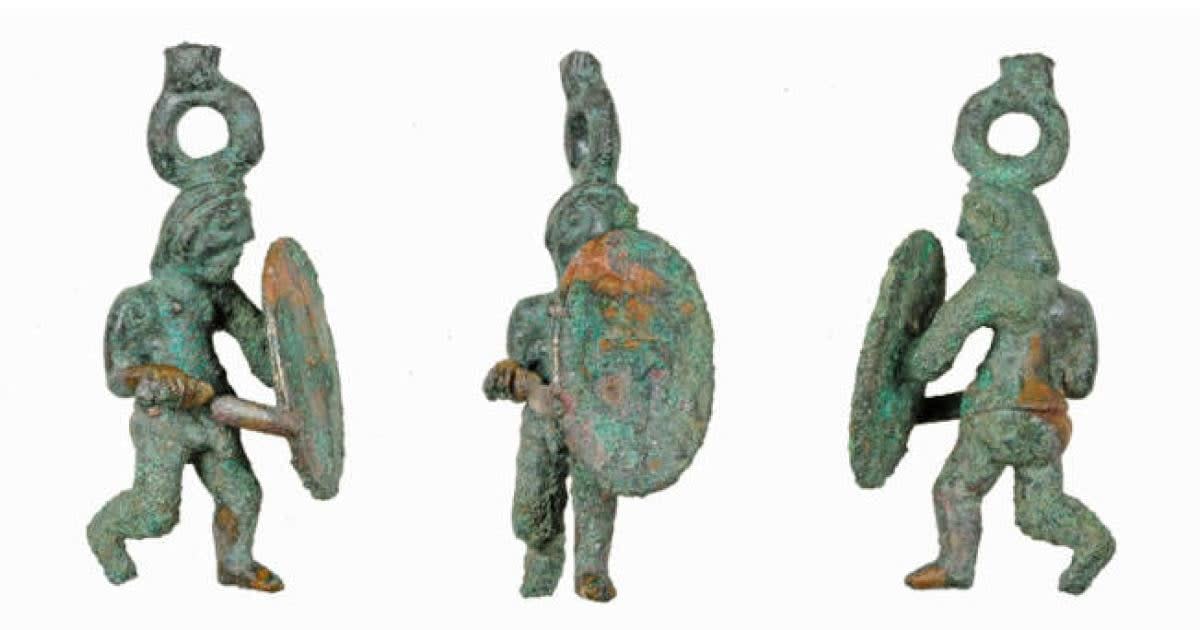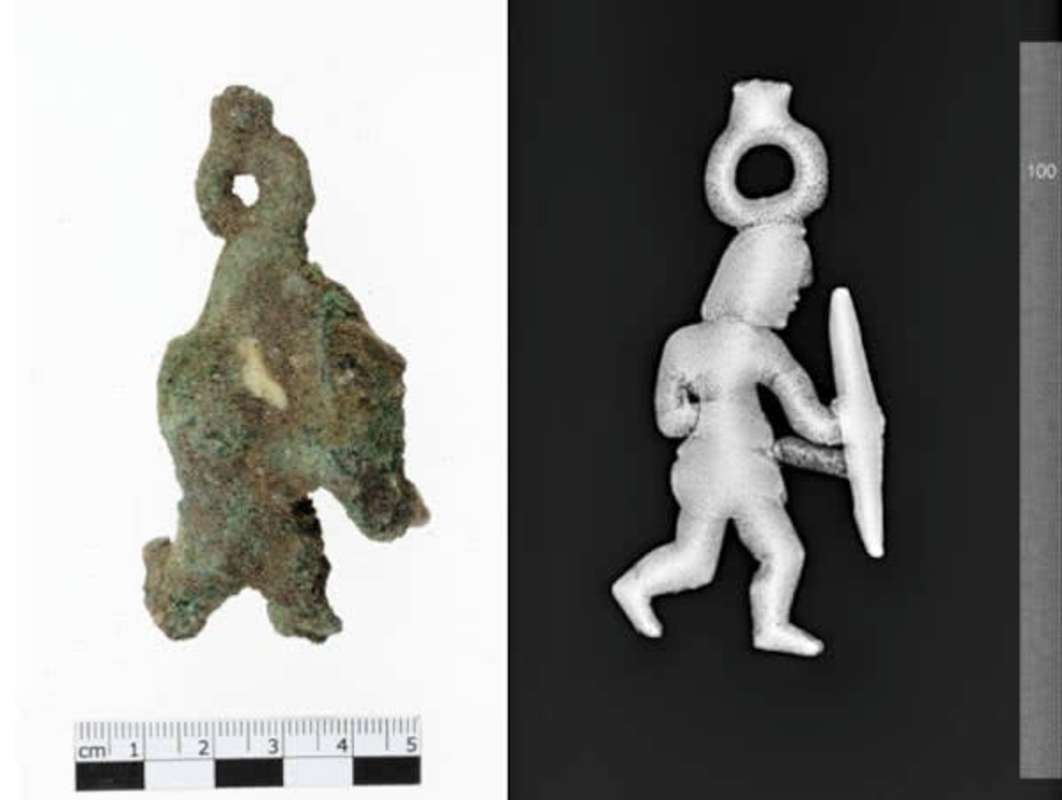Men’s Journal aims to feature only the best products and services. If you buy something via one of our links, we may earn a commission. Prices are accurate and items in stock at time of publishing.
Archaeologists excavating a site in Bavaria have unearthed one of the largest Celtic hoards ever discovered, including roughly 40,000 artifacts, Ancient Origins reported. The remarkable find, uncovered during a three year excavation at the Oppidum of Manching which lasted from 2021 until 2024, offers an unparalleled view into both the religious practices and technical skills of the Celtic people, facts which until now have remained elusive.
A Remarkably Rare Piece of Artwork
One of the most magnificent artifacts in the hoard was a bronze figurine depicting a Celtic warrior adopting a peculiar battle stance, the meaning of which has generated much discussion amongst historians. The warrior is shown in a lunging position, sword held aloft, and is clad only in an armored chest piece. He is completely nude from the waist down and, as the outlet reported, “display[ing] remarkable anatomical detail despite its diminutive size.” Mercenaries in the Greek army would often fight in the buff, as it was viewed as a display of machismo.
Related: Authorities Searching for Youtuber after Video Shows Him Washed Away by Waterfall
Thomas Stöckl, a restorer with the Bavarian State Office for Monument Preservation, noted that the “statuette is a very intricate and highly detailed piece.” Measuring 75 millimeters tall and weighing 55 grams, the artwork was created using an ancient, advanced technique known as lost-wax casting. The process involves submerging an intricate wax model in clay, which then melts the wax and creates a molten-bronze finish. A small loop at the top indicates that the piece may have been worn as a pendant.
Bavarian State Office for the Preservation of Monuments
Bavarian State Office for the Preservation of Monuments
Bavarian State Office for the Preservation of Monuments
Largely Intact Human Remains Found at Site
In all, 15,000 metal objects were uncovered in the hoard. Many were pieces from ancient metalworking activities, and researchers say they possessed a level of craftsmanship that was surprisingly advanced for the time. Also found was a ceremonial well which dates back between 120–60 B.C. Found within were a plethora of animal bones belonging to cattle, pigs, and sheep, 32 metal objects, fragments from more than 50 ceramic vessels, and three human skeletons. Two of the skeletons were remarkably well intact, which researchers said was an “extraordinary” peak into the daily lives of the Celtic people.
“The richness of finds from the latest excavation tells us how the late Iron Age settlement was organized, how people lived, worked, and ate, with whom they had trade relations, and what technical skills they had developed,” explained Mathias Pfeil, General Conservator of the Bavarian State Office for Monument Preservation.
